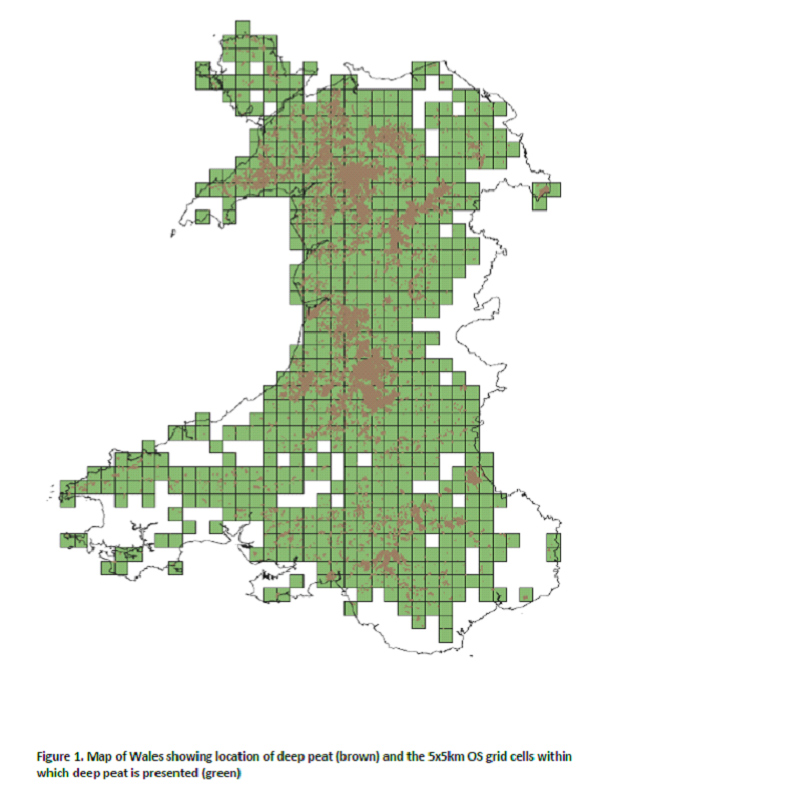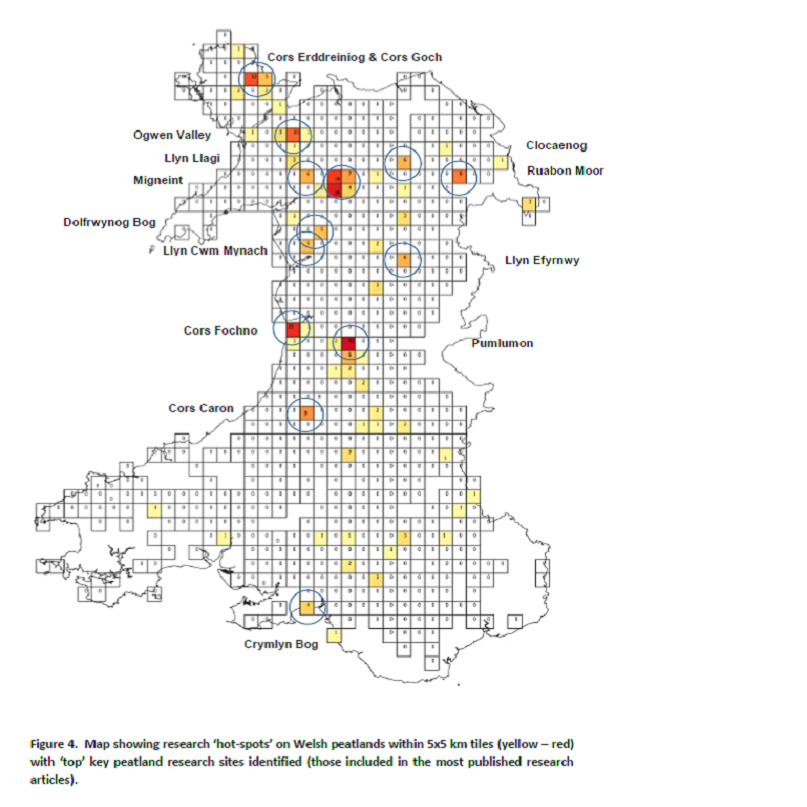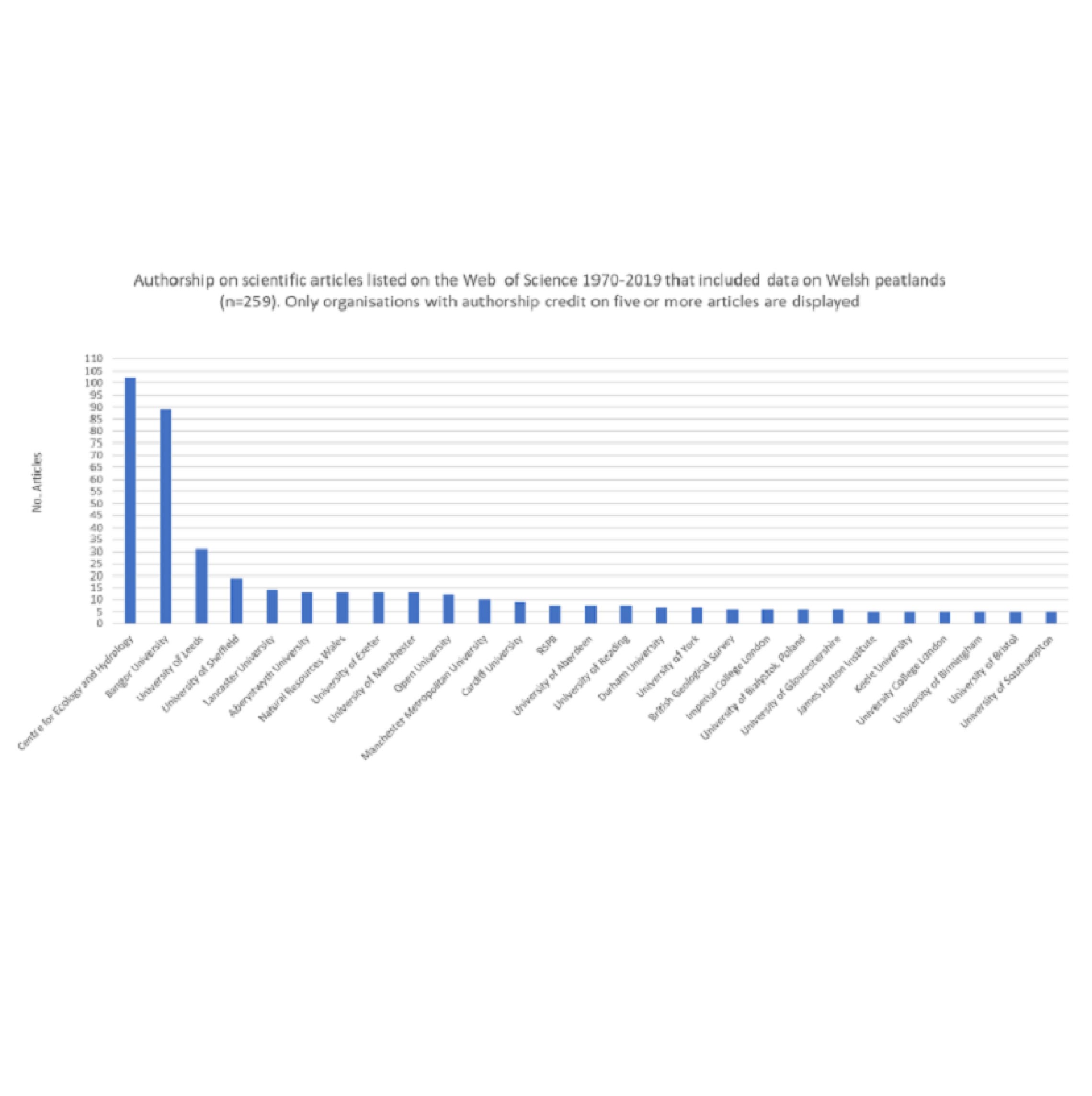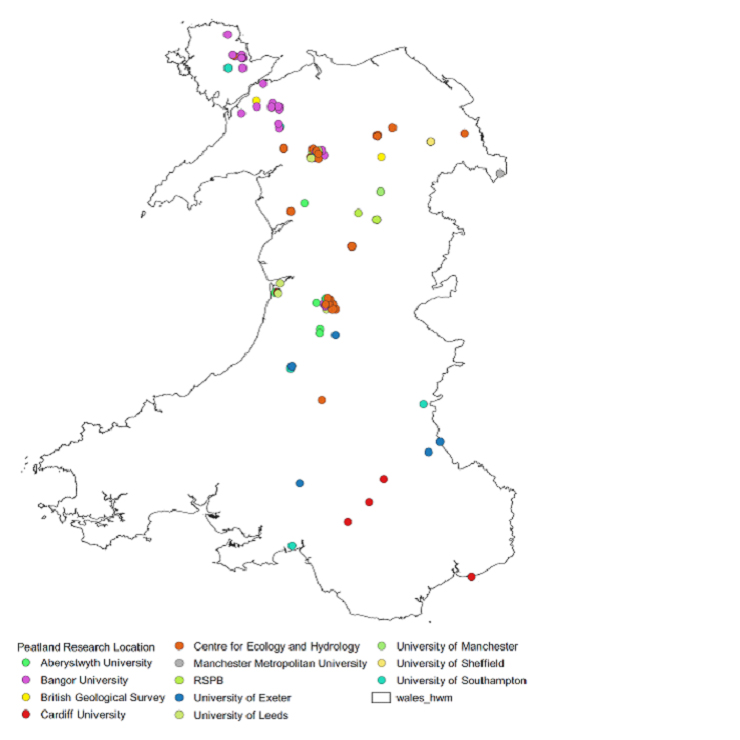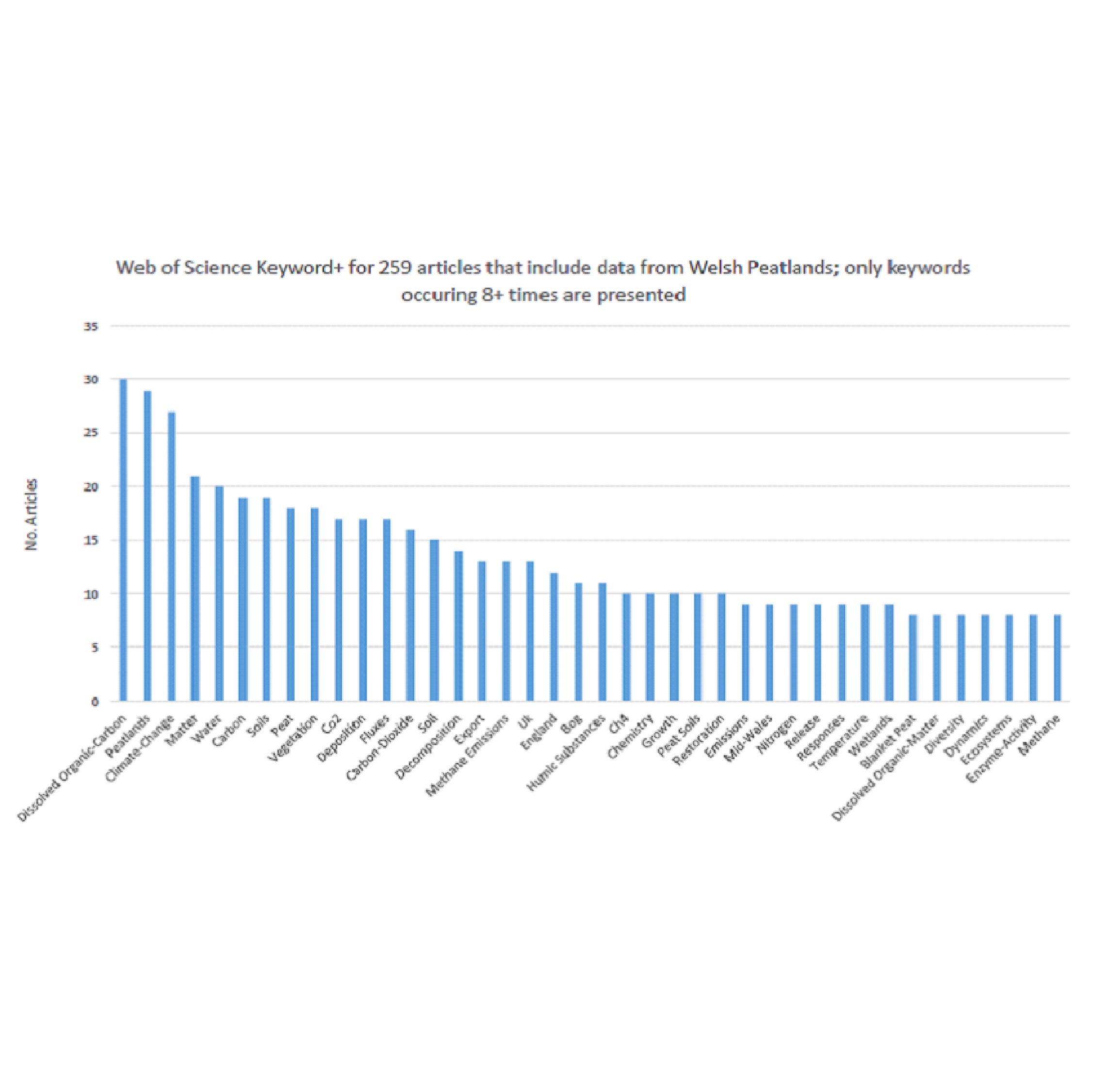A spatial database of peer-reviewed scientific publications has been collated from the Web of Science (https://wok.mimas.ac.uk) –‘ that includes more than 12,500 of the highest impact journals from the year 1970. This database was searched for peatland related search terms (e.g. peat*, mire*, bog*, fen) and Wales, in all search fields in October 2019.
This search returned 1,219 journal articles in total. These records were manually checked as to whether they collected primary data on Welsh peatlands, or used data collected from Welsh peatlands. If the data were data collected from Welsh peatlands, the location of the data / peatland was recorded, if this information was provided in the paper.
There were 259 records that were identified to include data from Welsh ‘peatland’ sites. Of these the peatland locations of 210 papers has been identified. For the rest either no access to the full paper was (22), or papers included pan Wales studies (26), or no exact location provided (sensitive information; 3).
From these 210 articles 300 research locations were identified.
The search results for these articles were exported into a spatial database by including the full citation information (so including such information as authors; year, institution, keywords, abstract) with the spatial location of the Welsh peatland site. Summary analyses of this database was carried out.
This dataset required ‘cleaning’, for example, as over the 49-year period institutions have merged. For these ‘old’ institutions were updated with the new organisational name e.g. Institute of Hydrology and Institute of Ecology identified as the Centre for Ecology and Hydrology; and the former campuses of the ‘University of Wales’ identified as the ‘new’ ‘city’ universities e.g. Cardiff University, Aberystwyth University etc).
[Additionally, to identify research papers from before 1970 a search using the same terms was undertaken in Google Scholar. This identified 25 papers treating Welsh peatlands, 18 of which included spatial information. As access to all these journals was not possible and citations could not be directly imported these are not considered further in this summery].

